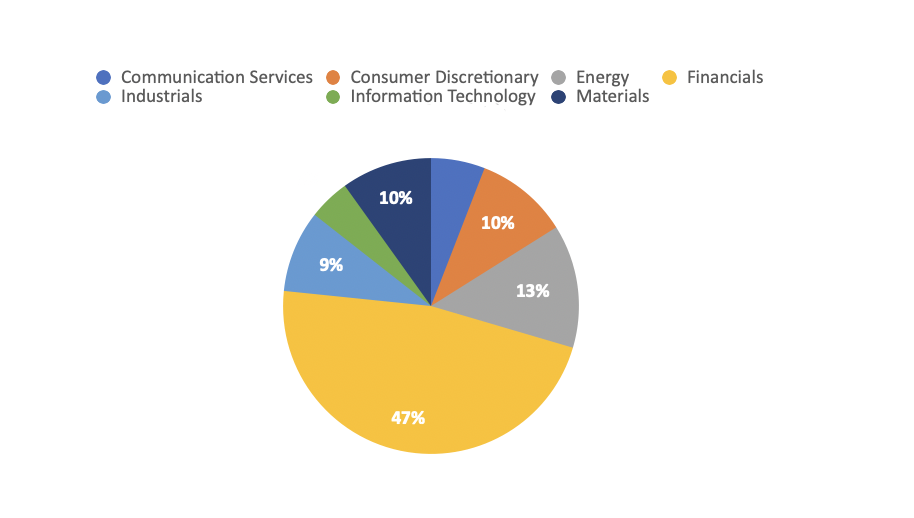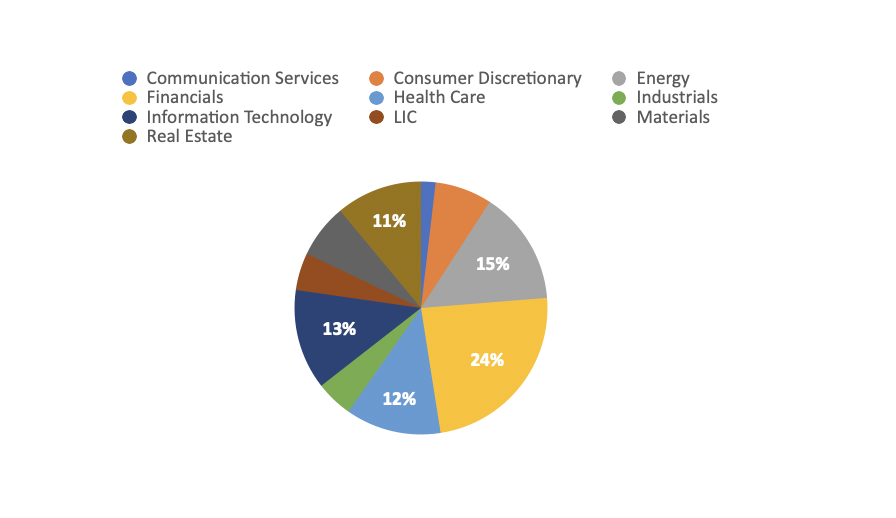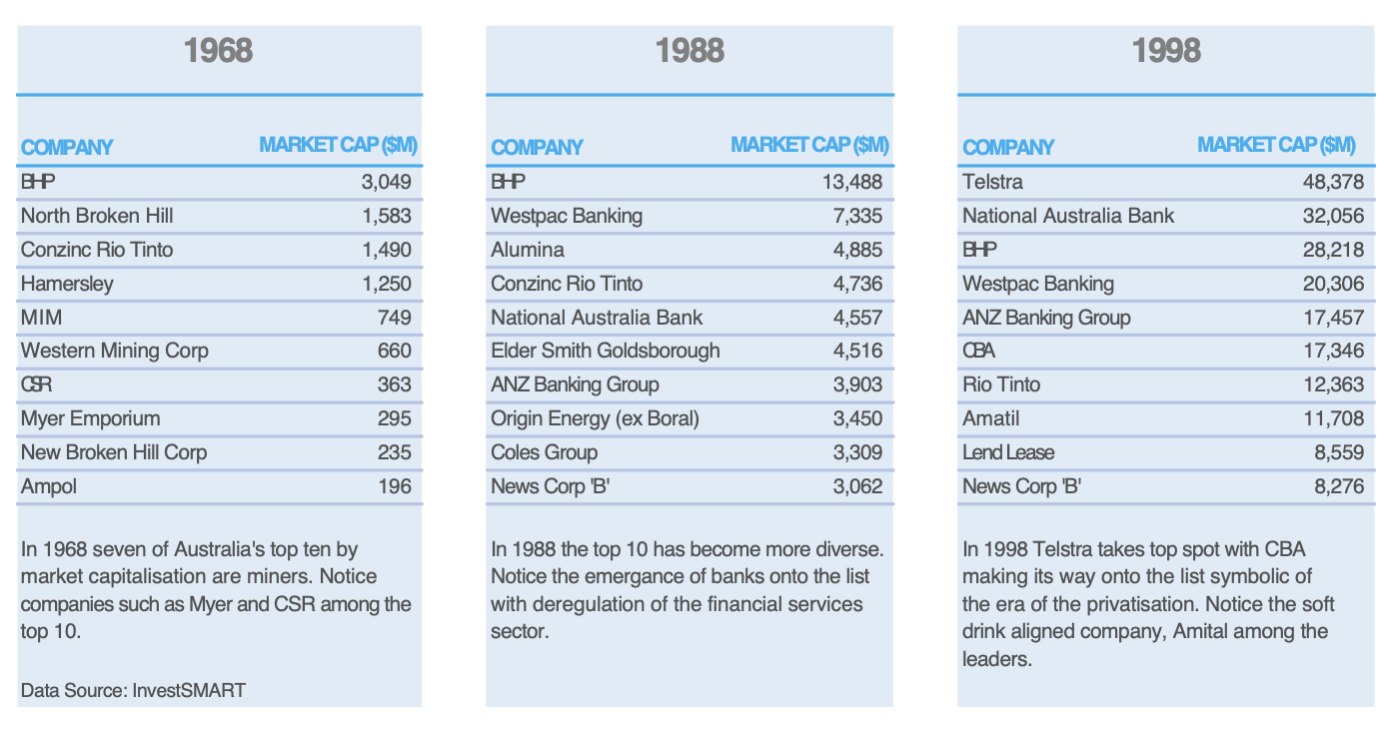How to transform your portfolio
The majority of Australians' portfolios, for better or worse, suffer from a little thing called "concentration risk".
In fact, Medallion Financial Group's Michael Wayne says it's not uncommon for his team to see client portfolios with upwards of a 40-60% exposure to the Big Four banks. And yet, financials were one of the worst-performing sectors of the past decade.
An investment in this sector (ex-AREITs) would have generated returns of 96% over the past 10 years. Meanwhile, an investment in healthcare or tech – two of the best-performing sectors of the decade – would have rewarded investors a handsome 503% and 335%, respectively.
In the video below, Michael shares how he and his team help transform legacy portfolios to deliver stronger returns for his clients and provides Livewire's readers with a real example. Plus, he shares the biggest myth that he encounters day to day surrounding these legacy positions.
Note: This video was filmed on 22 April 2021. You can watch the video or read an edited transcript below.
Edited Transcript
Can you take us through the role of an adviser?
Essentially we're investment advisers. So we're not financial planners, we're not fund managers. And often we're working with clients who've got investments in the stock market already, or they're looking to invest cash straight up. And basically, we help them navigate the different areas of the market. We're not like fund managers where we basically send the client a statement once every year, and then the clients happen to be passive and hands-off. We're much more hands-on with the client; we're speaking to them once or twice a month, occasionally even once or twice every week, if it's sort of going through a GFC type event or a COVID-19 crisis.
But more often than not it's clients who are already investing in the market, they're probably not getting the results that they had initially hoped for when they got into the market, and our job is to hold their hand and guide them through the different evolutions and changes in the economic landscape and the market landscape.
What are some of the pitfalls of legacy portfolios?
We often see clients, who've got legacy positions, these businesses that are big, they're stable companies, but they're more mature in nature. So the big four banks tend to make up a big component of Australian portfolios. I mean, it's not uncommon for us to see portfolios with 40-50-60% exposure to just the big four banks. And then you've got companies like Woolworths, Coles, Telstra.
These companies, as I mentioned, they're not going out of business anytime soon, but they're not new age, exciting businesses that are exposed to growth in our opinion. So we're able to help clients diversify their portfolio away from some of those more mature names, introduce them to certain areas and pockets of the market that might be more growth-focused. Because over time, the businesses that did well once upon a time won't necessarily be the companies that do well in the future. So you've got to always be thinking about how you're going to evolve your portfolio and how are you going to make sure that you're exposed to the new age growth areas because that's the way that you can generate some good returns.
And another thing we often see as well is clients will either be too exposed to a few companies. So they'll have only say 10 businesses in their portfolio. So highly concentrated portfolio, or at times, they'll be sort of over diversified and have 40, 50, or 60 businesses. So we try and help clients find a bit of a balance there and ensure that they're not too over diversified, but also not too overexposed to one area of the market.
What are some of the ways you would look to diversify a legacy portfolio?
So we never do everything all at once, it's a gradual rebalancing. And nothing is ever done without the client's consent. The client is consulted before every decision, we give them a call. When we see an opportunity that we like, we explain the upside that we see, the reasons for that upside and some of the downside risks. And likewise, if we see a company starting to tail away in terms of its key financial metrics, we'll give the client a call and explain to them why we think there are better opportunities out there.
We're looking to identify companies with good quality fundamentals, growing revenue, growing earnings, improving margins, good cash flow, low levels of debt and avoiding companies where those key metrics are in deterioration.
What is one example of how you transformed a client's portfolio?
In this particular case, it was a client with a self-managed super fund around $1.2 million invested. And from memory, his particular portfolio had about 15 holdings, so quite a concentrated portfolio. But of that 48% of that portfolio was in bank shares. I think the biggest holding was NAB, which was 24% of his portfolio. And then I think there was Bank of Queensland and then a couple of the other big four.

So you can see from that exposure, he was very concentrated in Australian banks. And by that virtue, the fluctuations in the banking space would heavily impact his portfolio. And that portfolio didn't have any exposure to healthcare, didn't have any exposure to IT. And those two sectors of the two sectors that have been the best performing sectors over the last five years on the Australian market. So for us, what we were able to do with that client is to hold his hand through that process.
Again, nothing was done without his approval, but over time, what we were able to do was to reduce the exposure to the banking sector, to around 12%. We introduced some healthcare and tech exposure about 15% each in those particular sectors. And since then, his portfolio is roughly achieved 19 to 20% per annum over a two year period. Whereas if he had maintained his existing portfolio and made no changes, the difference would have been about 10%. So that portfolio is 10% per annum better off having made those changes and having left at the same, which on a portfolio of that size was around sort of $200,000-$300,000.

So by not making drastic changes initially and immediately, but gradually rotating out of some of those overexposed, more mature, traditional sectors, and gaining some exposure to some new age growth areas of the market, you can make a big difference to the portfolio.
And just on one point as well, when looking at the style of different companies, you've got growth businesses, or you've got value businesses. Initially, his portfolio had 85% exposure to what we would categorise as Value-style companies and only 15% categorise as Growth businesses.
So over that two year period, what we've done is we've rebalanced the style weightings of the portfolio. So now it's a more balanced approach with about 50% allocated towards Growth businesses and about 50% allocated towards Value businesses. So they're the sorts of things that we can do to help people transition their portfolio and get it working a bit harder for them.
What are some of the common myths you encounter in this process?
So often that the big myth that people have is that it's a good business; I bank with CBA, or I go and I shop at Woolworths. So they have to be good companies that are going to do well over time. And I think that's overstated to a large extent. I think there's often going to be friction about what people want to hold in their portfolios. And our job is not to butt heads with the clients it's to open their eyes and bring their attention to other areas of the market or to reasons why certain companies might do better than others.

The evolution of Australia's top 10 listed companies in 1968, 1988 and 1998. Source: Medallion Financial Group and InvestSMART.
Ultimately it's the client's portfolio, it's the client's money, it's set up under their own name. They're the only people that can debit or credit the account. So they're the ultimate decision-maker. So if they don't want to do something for whatever reason, that's fine. In that particular case study that we just touched upon. One of the client's biggest holdings was a company called Deep Yellow, which is a uranium energy company. This isn't typically a business that we would hold for clients. But he wanted to hold it, he had high conviction in that company for his own reasons. And over time it's actually done quite well for him.
So if a client wants to hold a business, because we're not a fund, because we actually are managing clients individual portfolios, if they have specific preferences that they want to stick to, then by all means we're able to work around those.
A personalised approach to investment management
Medallion Financial is a specialist wealth advisory firm, with expertise across a range of domestic and international markets.
To learn more about how Medallion helps individuals, families and organisations in constructing robust investment portfolios, please click here. Or follow Michael Wayne for more of his insights.
Want more great insights like this?
Give this wire a like if you enjoyed the discussion or hit follow to be notified every time we post.
If you're not an existing Livewire subscriber you can sign up to get free access to investment ideas and strategies from Australia's leading investors.
2 topics
8 stocks mentioned
1 contributor mentioned

